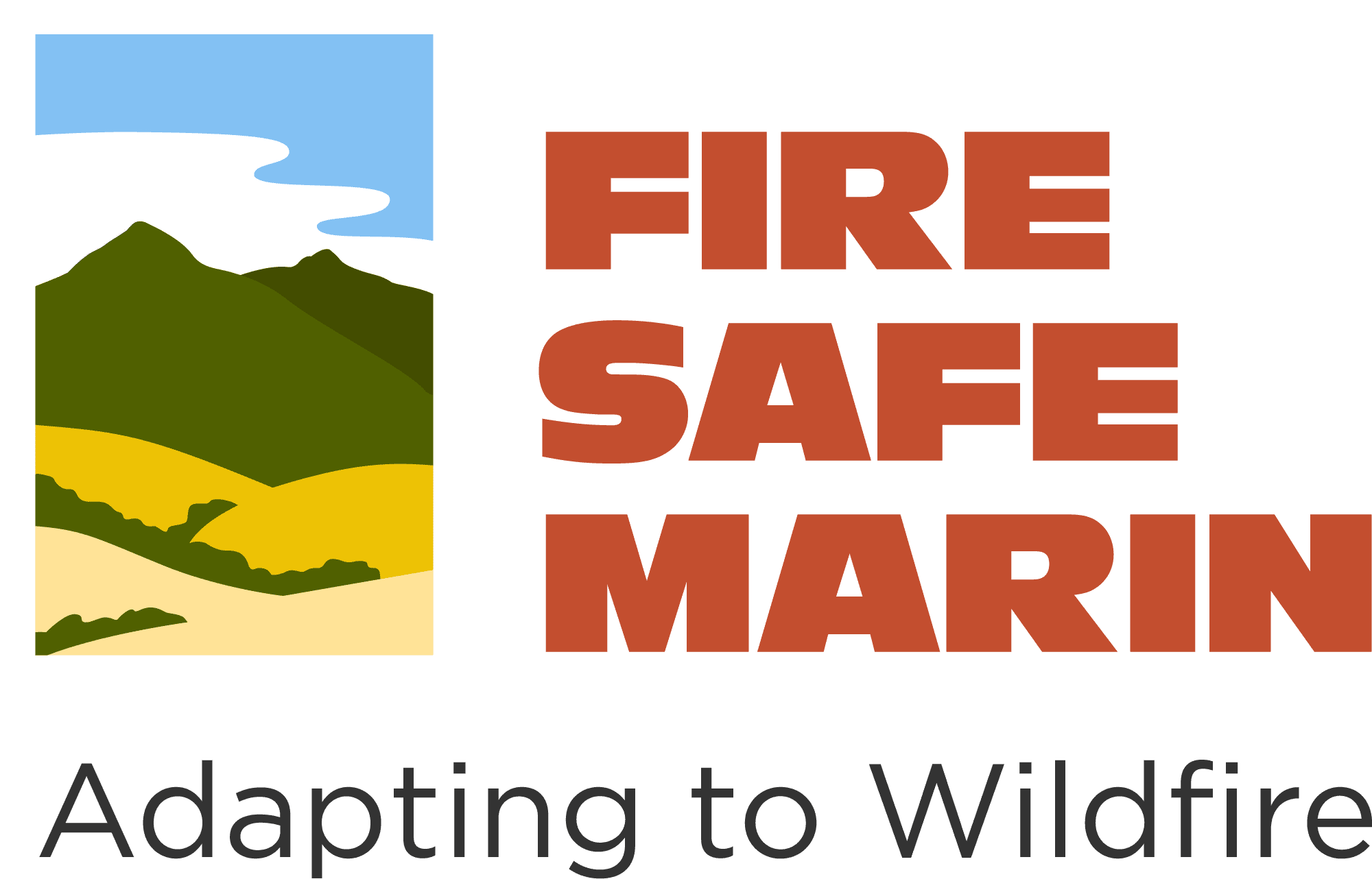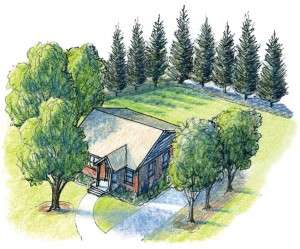Question: I have lots of trees on my property. Am I supposed to cut those down? It can cost thousands of dollars per tree! Help!
Answer: Absolutely not! Regarding defensible space, we specifically state that mature, native trees rarely need to be removed. Have an arborist check each tree for health. Remove all dead wood; remove lower limbs to raise the “skirt” of the trees to at least 6’ above the ground; remove “ladder” fuel such as brush, shrubs, and grass beneath the trees. Thin the canopy and keep the trees healthy with irrigation appropriate to the species.
Consider removing conifers such as pine, fir, cypress, and cedar (redwoods are among the most fire resistant conifers, but still require maintenance). If you can’t remove them, separate conifer trees so canopies don’t touch (for example, remove every other tree), and raise the skirt by removing limbs as high as the health of the tree will allow. Zero understory fuel such as brush, grass, or needle litter deeper than 1-2″ is tolerable with conifers.
Cut back limbs that are within 6′ of your roof. Leaf litter on your roof and in rain gutters is your enemy, and preventing leaves from falling on your roof in the first place is your best bet to protect your house. (Having a fire resistant roof and hardened construction is paramount to wildfire safety, just as important as defensible space and vegetation)
We recommend removing all juniper and bamboo within 100’ of your home. Check our list of Fire Prone plants to see species to avoid. Choose Fire Resistant Plants instead, and use our planting and maintenance guidlines to keep them fire safe.
Don’t forget to focus on your house itself. Cover vents with a fine wire mesh (1/8” or smaller), caulk gaps and cracks greater than 1/16” in siding and trim where embers can enter or become lodged, and keep the roof, gutters, decks, porches, and base of the house completely clear of fallen leaves and vegetation at all times during fire season.








